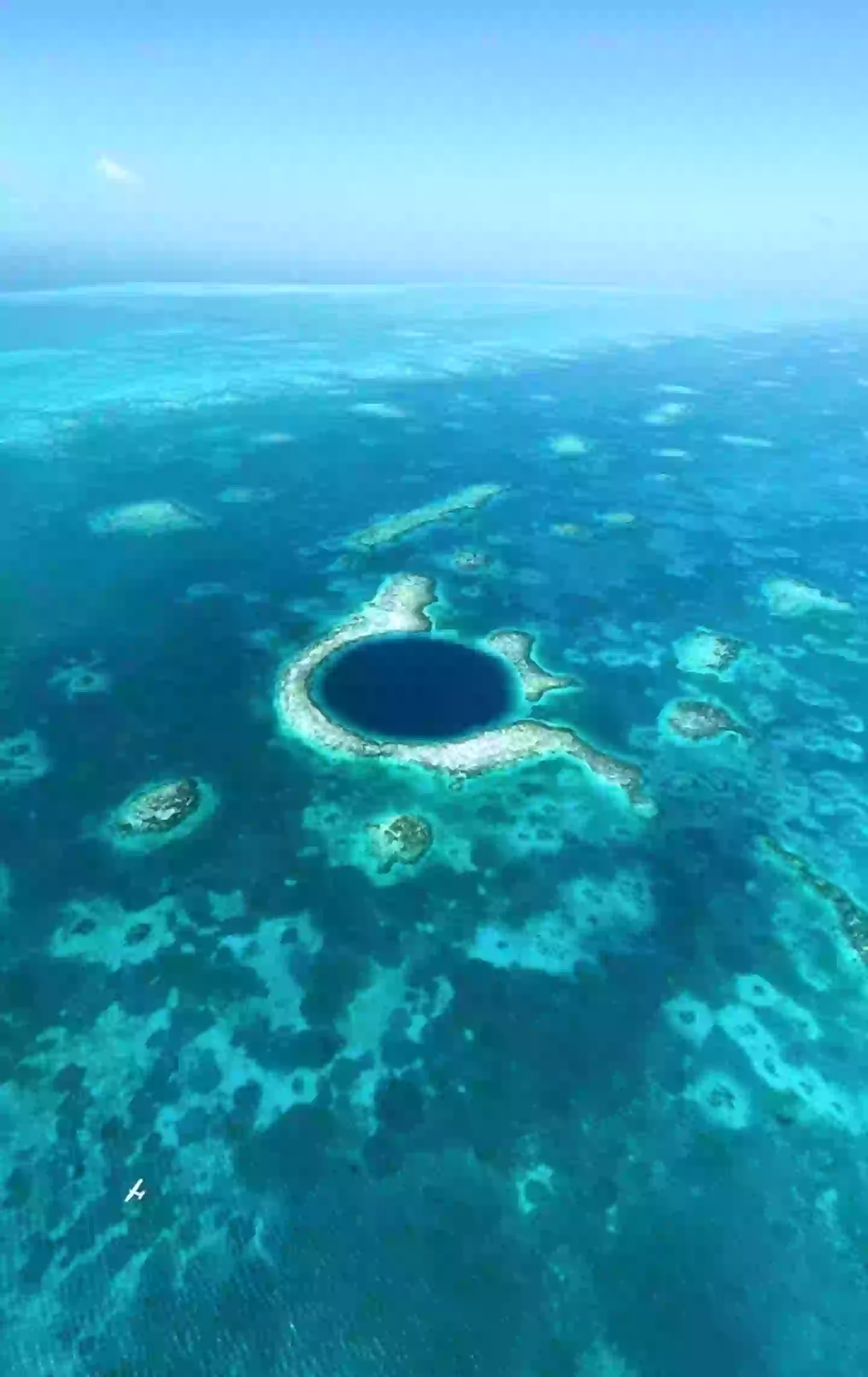“Unlocking Secrets of the Deep: What 5,700 Years of History Revealed Beneath the Great Blue Hole”
Have you ever wondered what secrets lie beneath the surface of an iconic natural wonder? Well, grab your snorkel gear, because the Great Blue Hole off the coast of Belize has just revealed 5,700 years of its mysterious past! This underwater marvel, shaped during the Ice Age, is not just a pretty face—it’s a time capsule of epic storm events, thanks to a team of scientists from Goethe University Frankfurt who just couldn’t resist peering deep into its depths. What lies in those layers of sediment? Spoiler alert: they found a whopping 574 storm events recorded over millennia! As we dive into this fascinating discovery, we’ll explore how the Great Blue Hole’s history could help predict the turbulent weather of our future. Click here to LEARN MORE!
A sample drilled from the bottom of the Great Blue Hole has uncovered 5,700 years of history.
The underwater sinkhole, located off the coast of Belize in Central America, is one of the world’s most natural wonders.
It’s almost perfectly circular, over 300 meters (1,000 feet) wide and around 125 meters (410 feet) deep. And the view from above is pretty stunning, with contrasting light and dark blue accents in the ocean.
The Great Blue Hole was formed during the Ice Age, around 10,000 years ago, when sea levels were much lower.
Back then, it is believed that the limestone cave system on dry land collapsed when the ocean rose and created a huge sinkhole. When explorer Jacques Cousteau came across it in 1971, it became famous, attracting visitors from all around the world.

The Great Blue Hole is located just off the coast of Belize in Central America (Getty Images)
In 2022, however, a group of scientists led by the Goethe University Frankfurt were in search of more answers.
They travelled to the area and managed to obtain a sediment core sample by using a drilling platform shipped across the sea to the site itself.
The researchers were able to identify tempestites, which are distinct sedimentary event layers, caused by storms and waves.
After taking note of the sediment cores, they estimated that 574 storm events took place over the last 5,700 years.
Dr Dominik Schmitt, lead author of the study and researcher in the Biosedimentology Research Group at Goethe University Frankfurt, has now explained: “Due to the unique environmental conditions – including oxygen-free bottom water and several stratified water layers – fine marine sediments could settle largely undisturbed in the Great Blue Hole’.

Scientists have estimated that 574 storm events took place in the area over the last 5,700 years (Getty Images)
“Inside the sediment core, they look a bit like tree rings, with the annual layers alternating in color between grey-green and light green depending on organic content
“The tempestites stand out from the fair-weather grey-green sediments in terms of grain size, composition, and colour, which ranges from beige to white.”
Amid the findings, the authors have warned that we could see more storms than usual in the next 100 years.
They say this is due to human made global warming.
Professor Eberhard Gischler, head of the Biosedimentology Research Group at Goethe University Frankfurt, also said: “Our results suggest that some 45 tropical storms and hurricanes could pass over this region in our century alone.
“This would far exceed the natural variability of the past millennia.”















